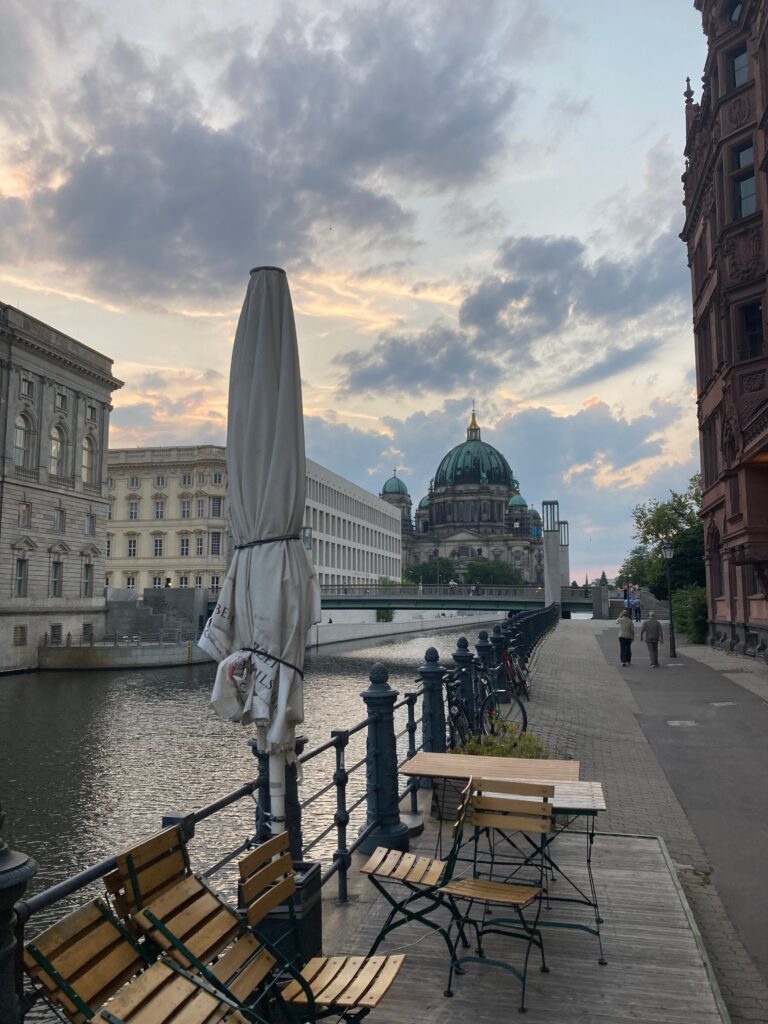While I studied my destination to a considerable degree before travelling, what I didn’t fully expect was the difference in the way that Germans choose to live life. They don’t permit their life to be a daily grind of essentially enabling their employment, their work enables them to live the kind of life that they want to lead. Germans don’t spend hours trapped in automobile traffic, but both have and make use of their efficient public transportation system. With abundant sunshine during their summer, life along Berlin’s streets is fairly pleasant with streets lined with local cafes, shops, bars, and restaurants which usually feature plenty of patio sharing space with the sidewalk to allow Berliners to enjoy their leisure time with friends and family and even with passersby, as Berlin is a heavily pedestrian dominated city.

Parks are a frequent sight in Berlin, and feature everything from soccer goals and fields to running treks to stages for open air music performances to nature spaces, and Germans can be seen taking full advantage of it. Children and pets are a common sight in Berlin as well. With the abundant amount of monuments and museums in Berlin, there’s always somewhere to go and something to see. Being an international city with a population well over three and half million, there are plenty of interesting people to meet and the architecture ranges from neoclassical to modern so that it doesn’t tend to provide a boring scenery along the way. Restaurants provide a large variety of different types of food from traditional German to Korean, Japanese, Chinese, Italian to Middle Eastern cuisine, one is always able to make an interesting evening with friends or loved ones, or even potentially with the locals together with some of the various beer gardens and entertainment locations.
The museums range from classical art museums, like the Pergamon on Museum Island, to museums featuring life under the Nazi National Socialists and even the Soviet Stazi regime in East Berlin. The Rotes Rothaus is a goth looking structure that houses the seat of Berlin’s government near the eastern city center right across from the Radio Tower and the National Cathedral. Just a short walk away features the State Opera and the famous Humbolt University with face a former royal palace. In this way, Berlin offers not just an opportunity to see the past in old structures and works of art from a by gone age, but it is also a very modern city replete with very modern structures and art that is dedicated to building a better world. One might remember Berlin as a city of walls and repression dating from the cold war, but now it is anything but. Berlin is a very open city that brings both the past and the present world together and which aims to provide a path to a more free and open world for future generations.
